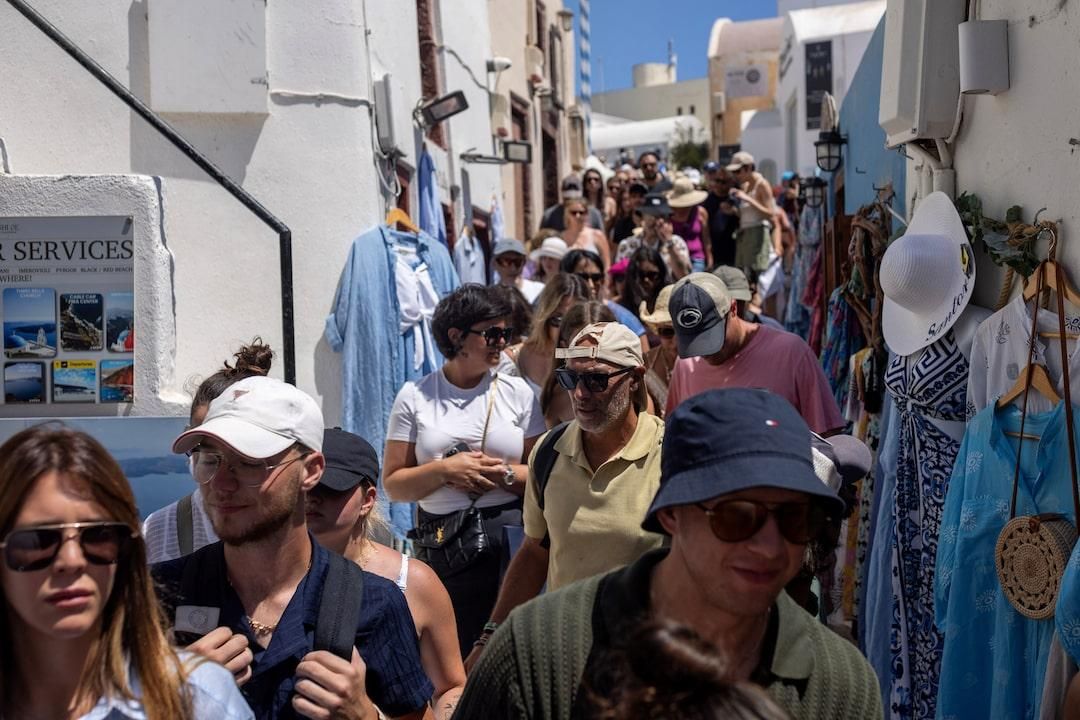Travelers from all over the world, equipped with selfie sticks and cell phones, swarm Santorini in dinghies from enormous ocean liners, in coaches that wind up the precipitous hillsides, and atop donkeys that clip-clop along the winding cobblestone streets.
A few people endure the afternoon heat in search of a prime location among the white-washed buildings and blue-domed churches, where they must wait for hours to witness the renowned sunset of the Greek island. Many more follow them as the sun sets, clambering onto balconies or the cliffside with cameras in hand.
"This has been my dream since high school," said American tourist Maria Tavarez, 40.
But for many of Santorini's 20,000 permanent residents, the once idyllic island of quaint villages and pristine beaches has been ruined by mass tourism.
As protests against excessive tourism erupt in other popular holiday destinations, including Venice and Barcelona, Santorini represents one of the starkest examples of how hoards of visitors can impact a place.
Authorities on the island have joined other tourism hotspots in calling for a cap on visitors.
The growing number of foreign tourists - some 3.4 million visited the island last year, according to mayor Nikos Zorzos - are putting pressure on its outdated infrastructure and are pricing islanders out of the housing market.
Zorzos says he has been pushing authorities for years not to allow a single extra bed on the island and has proposed a cap on the number of cruise ship visitors to 8,000 a day, down from around 17,000.
"It is in the best interest of our land for there to be a limit," he said.


_1.jpg)
_1.jpg)
_2.jpg)



.svg)


